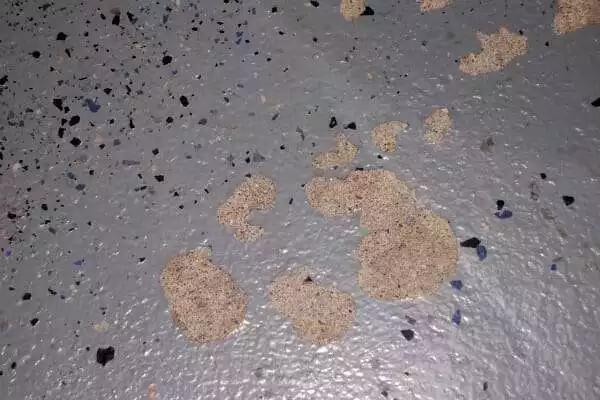Epoxy garage flooring projects require attention to detail and careful execution to achieve optimal results. We get far too many calls from people that have tried to do it themselves but then need someone to come in and fix it for them afterwards – or actually remove what they did and start the whole process again.
Here are some of the challenges you may face during a DIY epoxy garage flooring project:
1. Inadequate Surface Preparation
Before applying epoxy coatings, proper surface preparation is crucial for ensuring adhesion and longevity. Failing to adequately prepare the garage floor can lead to various issues down the line. We always recommend undertaking diamond grinding of the concrete to create a rough texture on the floor, allowing the epoxy to adhere more effectively.
2. Insufficient Drying Time
Epoxy garage flooring requires sufficient drying time between coats to achieve proper curing and bonding. Rushing the process by applying subsequent coats too quickly can lead to a range of problems.
3. Improper Mixing of Epoxy Garage Flooring Components
Epoxy coatings consist of resin and hardener components that must be mixed thoroughly in the correct proportions. Inadequate mixing can result in uneven color, poor adhesion, or improper curing.
4. Bubbles and Fish Eyes
The presence of bubbles or fish eyes in the epoxy coating can mar the appearance of your garage floor. These imperfections often occur due to trapped air or contaminants during the application process.
5. Uneven or Inconsistent Application
Achieving a smooth and uniform epoxy coating requires careful application techniques. Inconsistent application can result in uneven color, texture, or glossiness.
6. Lack of UV Resistance
Garages often receive direct sunlight, and prolonged exposure to UV rays can cause epoxy coatings to yellow or fade over time. Using a non-UV resistant epoxy or failing to protect the floor from sunlight can lead to aesthetic deterioration.
Conclusion
Embarking on a DIY epoxy garage flooring project can be a rewarding endeavour – but only if it all goes right.
It’s important to be aware of the potential challenges and pitfalls that can arise along the way.
Our tip for getting it done properly and avoiding all the potential issues – hire an experienced flooring installer to do it for you. We can let you know where you can reach one. 😉
FAQ's
It is recommended to repair any significant damage, such as cracks or deep pitting, before applying epoxy. Smaller imperfections can be addressed with the use of epoxy filler.
Grinding the concrete will improve adhesion by creating a rough surface for the epoxy to bond with.
Best practice is to grind off the existing coating and adhere the epoxy coating directly to the concrete.
When properly installed and maintained, epoxy garage flooring can last for many years. The lifespan may vary depending on factors such as the quality of the epoxy, the amount of foot and vehicle traffic, and the level of maintenance.
Yes, you can enhance the appearance of your epoxy floor by adding colour flakes, metallic pigments, or other decorative elements. These additions can provide a unique and personalized touch to your garage floor.




